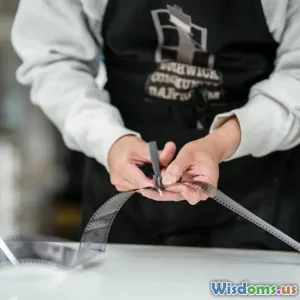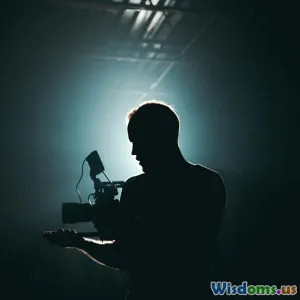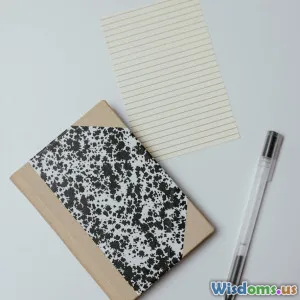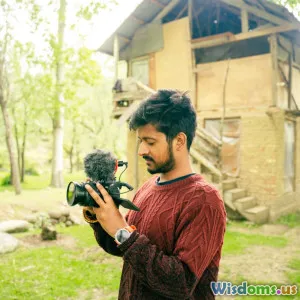
Seven Common Editing Mistakes That Ruin Short Films
8 min read Discover seven critical editing mistakes that can undermine your short films and learn how to avoid them for a polished, impactful final product. (0 Reviews)
Seven Common Editing Mistakes That Ruin Short Films
Short films may be brief, but they demand rigorous editing discipline that can rival full-length features. Because every second counts, the editing process wields the power to transform your story—or dampen its impact entirely. Yet many aspiring filmmakers fall prey to common editing pitfalls that dilute narrative clarity and emotional resonance.
In this article, we'll dissect seven frequent editing mistakes that subtly—but seriously—undermine short films, enriched with examples and practical advice to help you avoid these traps.
1. Poor Pacing: The Silent Killer of Engagement
Pacing is the heartbeat of editing. Short films need tight, purposeful rhythms that keep viewers invested from the opening frame to the final cut. A common mistake is uneven pacing—either rushing through story beats or dragging scenes unnecessarily.
Take a moment to analyze acclaimed short films like Paperman (2012, Disney) where the timing of each take and cut builds emotional impact deliberately. Conversely, amateur shorts often linger on static shots or unnecessarily long scenes that kill momentum.
Tip: Use rhythm akin to music. Vary shot lengths strategically—quicker cuts for tension, longer shots for emotional gravity—and always ask if a scene moves the story forward.
2. Overuse of Effects and Transitions
It’s tempting to spice up your short film with flashy transitions or visual effects to show technical skill, but overdoing these can distract and confuse viewers.
Notable editor Walter Murch emphasized “invisible editing,” where transitions should serve the story and not overshadow it. Overlapping dissolve effects or excessive wipes often pull audiences out of the narrative flow.
Example: In indie short films overwhelmed with Star Wars-style wipes, the transitions become gimmicky rather than storytelling tools.
Tip: Keep transitions simple and meaningful. Use cuts and fades judiciously, reserving intricate effects for moments that truly enhance storytelling.
3. Ignoring Continuity and Match Cuts
Continuity errors confuse audiences and break immersion. Short films suffer tremendously if characters magically change position, props shift inconsistently, or the timeline feels chaotic due to careless continuity neglect.
Legendary editors uphold match cuts—a seamless visual or action flow between shots—to help preserve spatial and temporal coherence.
Take film classics such as Memento (2000) to grasp how meticulous shot matching sustains clarity even in complex narratives.
Tip: Maintain a detailed continuity log during shooting to ensure consistent details. Carefully examine timeline transitions to weed out jarring mismatches.
4. Neglecting Sound Editing and Design
Visual brilliance can be undone by poor audio editing. Background noise jumps, inconsistent audio levels, and clumsy sound effects detach viewers.
In short films where visuals often lack big-budget spectacle, sound design elevates atmosphere and guides emotional responses. Remember, sound complements storytelling just as much as visuals.
Documentaries like The Silent Child (2017) showcase exemplary sound mixing that conveys emotional nuance, spotlighting how audio crafts immersive environments.
Tip: Invest time in balancing audio tracks, removing unwanted noise, and syncing dialogue accurately. Consider employing diegetic sounds to enrich scenes naturally.
5. Lack of Narrative Cohesion Due to Overediting
Editing isn’t just about trimming excess footage. Overediting—cutting too aggressively or rearranging scenes without narrative logic—can fragment story flow and confuse viewers.
For example, sudden jumps in time or unexplained reaction shots, if poorly executed, disrupt the emotional journey.
Grammys-winning editor Thelma Schoonmaker often stresses the importance of preserving emotional continuity, even when tightening pacing.
Tip: Draft storyboards or rough cuts to test narrative cohesion before finalizing. Show cuts to peers for feedback on clarity.
6. Inconsistent Color Grading
Color grading unifies the look of your short film and sets tone, mood, and atmosphere. Inconsistent color grading—where scenes have mismatched tones or irregular color palettes—jars the viewer and appears unprofessional.
Successful filmmakers meticulously plan the color scheme to reinforce themes. For example, Wes Anderson’s films reveal how carefully controlled palettes shape perception.
Even on a budget, amateur filmmakers can avoid harsh inconsistencies with simple LUTs (Look-Up Tables) or color correction tools built into editing software.
Tip: Develop or choose a color grading profile for your film's theme before editing and apply it consistently.
7. Forgetting to Save and Back Up Project Files
While this is less creative, it’s arguably the most critical technical oversight. Losing project files, or working without systematic backups, can derail months of hard work.
Professional editors employ cloud services and external drives to safeguard versions and custom assets. According to a 2019 study, 28% of independent filmmakers reported at least one catastrophic data loss during production.
Tip: Establish a workflow that includes frequent saves, versioning, and backups. Consider automated cloud backup tools to mitigate risks.
Conclusion
Editing is the invisible art that shapes your short film’s ultimate impact. While mastering every subtlety may take time, understanding these seven common editing mistakes—and actively avoiding them—can instantly elevate your final product.
Remember, effective editing emphasizes clarity, purpose, and emotional resonance rather than flashy tricks or shortcuts. By focusing on pacing, continuity, sound, and technical precision, you unlock the full potential of your storytelling.
Whether you’re a student of filmmaking or an emerging director, strive for meticulous, thoughtful editing to provide audiences with a captivating and polished cinematic experience.
“Editing feels almost like sculpting or a form of continuing writing.” – Sydney Pollack
Embrace your role not just as a cutter of shots but as a storyteller defining how your film breathes, pulses, and connects.
Rate the Post
User Reviews
Popular Posts




















